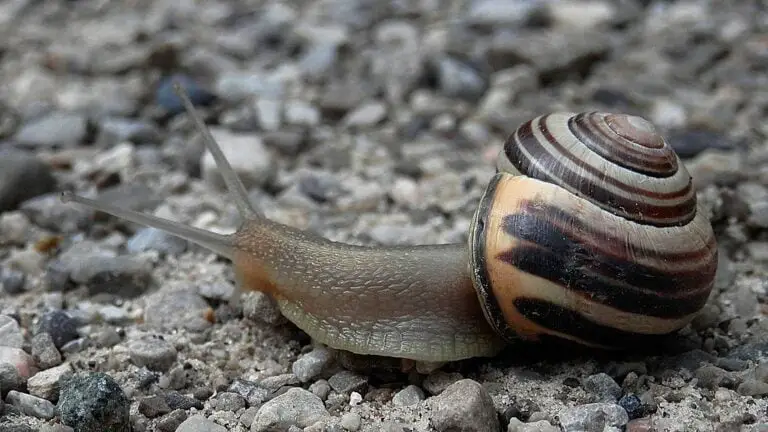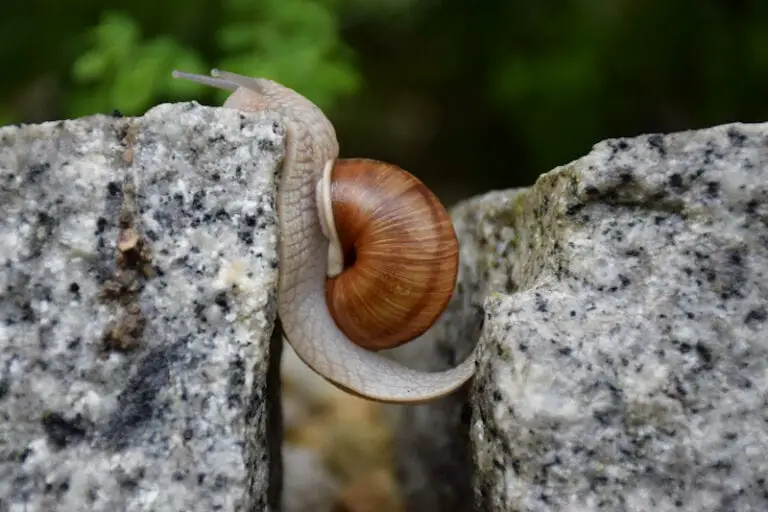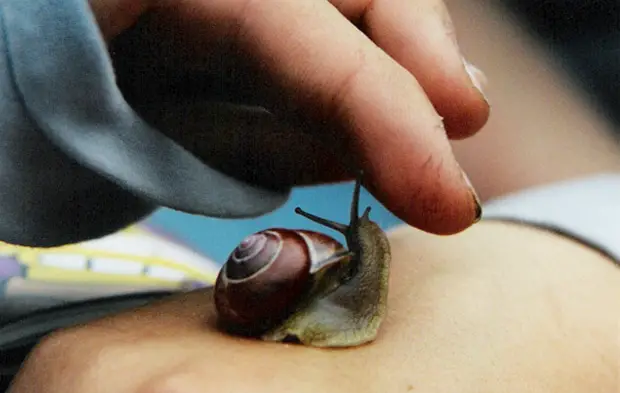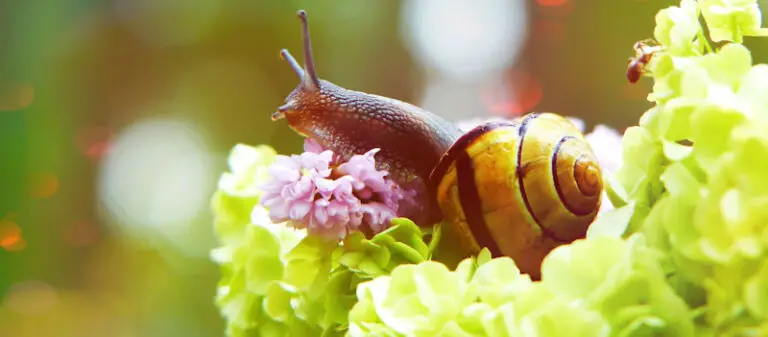Slow and Steady: The Joys of Keeping Snails as Pets
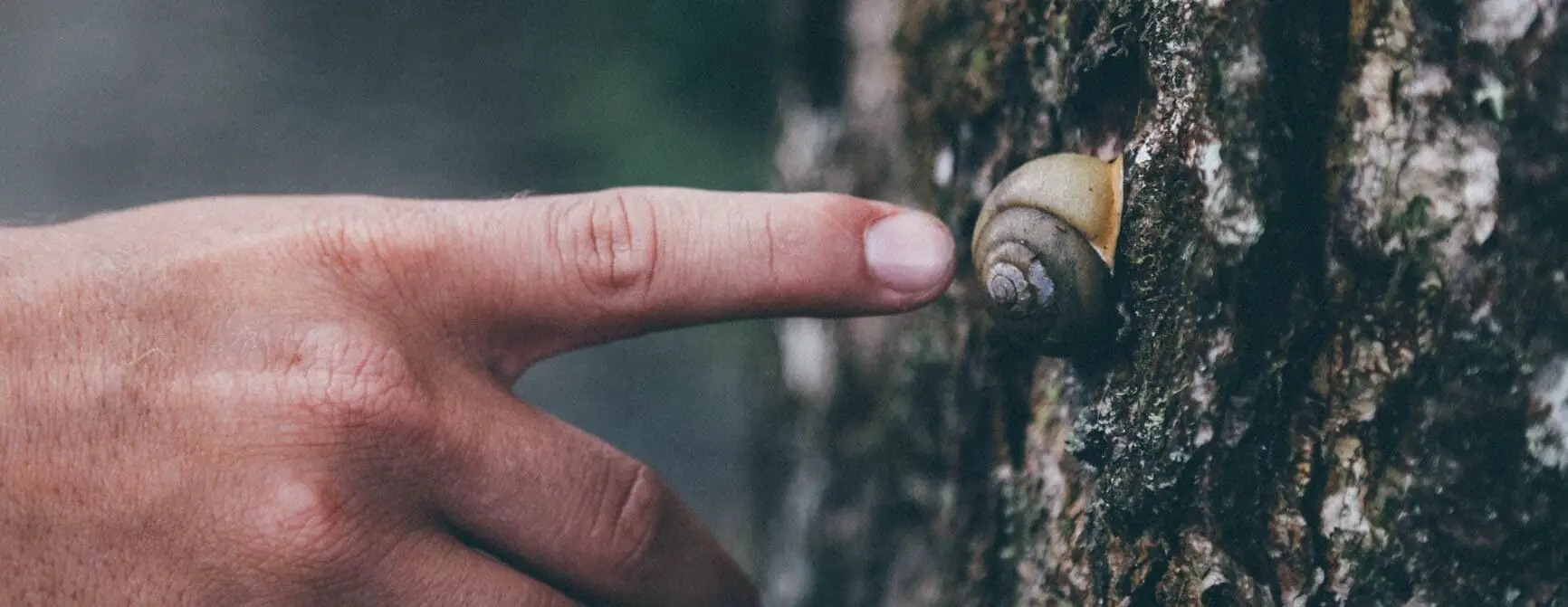
The Appeal of Snails as Pets: A Beginner’s Guide
A Brief Overview of Snails as Pets
When most people think of pets, they probably imagine dogs, cats, fish or birds. However, there is a growing trend of keeping snails as pets.
These small creatures are easy to care for and have a lot to offer as companions. Snails have become increasingly popular due to their low maintenance, unique appearance and fun personalities.
Unlike traditional pets that require daily walks or constant attention, snails are content with sitting in their terrariums and exploring their surroundings at their own pace. In addition to being low-maintenance companions, snails are also affordable.
They do not require expensive equipment or specialized food. In fact, many people choose to keep garden snails as pets since they are readily available and can be collected outdoors.
The Benefits of Having Snails as Pets
Snail owners often rave about the benefits that come with having these slimy creatures in their homes. For one thing, snails can be quite entertaining to watch.
They move slowly and gracefully across surfaces using their muscular foot, which can be fascinating to observe. Another benefit is that snails provide a sense of calmness and relaxation for those around them.

Watching these gentle creatures glide along at their own pace can help reduce stress levels and promote relaxation. In addition to providing entertainment and relaxation benefits, snail owners also appreciate how easy it is to care for them.
Snail habitats only need basic maintenance such as watering and cleaning occasionally – which is nothing compared to the care requirements of other animals commonly kept as pets. Not only do pet snail owners enjoy the beauty of nature in miniature form within the walls of their home – but also more practical benefits such as learning about ecology through observing different species up close – leading towards sustainability!
Overall having a pet like a snail is an excellent way to bring nature indoors while minimizing the effort and cost typically required for more traditional pets. They are perfect for those who want a low-maintenance companion or are unable to have larger pets due to space or mobility constraints.
Types of Snails
Not all snails are created equal, and there are a few common types that make great pets. Each type has unique characteristics and behaviors that can make them interesting additions to your home.
Land Snails
Land snails are the most common type of pet snail. They come in many different colors and sizes, ranging from small thumbnail-sized snails to larger species that can reach up to 10 inches in length.
One popular type of land snail is the Giant African Land Snail, which is known for its impressive size and relatively easy care requirements. If you’re interested in getting a land snail as a pet, keep in mind that they require a moist environment to survive.
You’ll need to provide them with a terrarium or similar enclosure that has plenty of substrate (such as coconut coir or sphagnum moss) for them to burrow into. They also enjoy having hiding places such as logs or rocks.
Aquatic Snails
Aquatic snails are another popular choice for pet owners, particularly those who keep fish tanks. These types of snails can help keep your aquarium clean by eating algae and other debris. The most commonly kept aquatic snail is the Mystery Snail, which comes in many different colors and patterns.
They’re relatively easy to care for and don’t require any special equipment aside from an aquarium with clean water. Some other popular types of aquatic snails include Nerite Snails, Ramshorn Snails, and Pond Snails.
Rabbit Snails
Rabbit snails are a lesser-known type of pet snail that can be fascinating to watch. These unusual-looking creatures have elongated shells with pointed tips that resemble rabbit ears, hence their name. Rabbit snails are native to Southeast Asia and require specific water conditions to thrive.
They prefer slightly alkaline water with a pH of around 7.5 and need plenty of calcium in their diet to maintain healthy shells. If you’re interested in keeping rabbit snails as pets, be prepared to do some research on their unique care requirements.
Apple Snails
Apple snails, also known as Pomacea Canaliculata or Golden Apple Snails, are another popular type of pet snail. These large, brightly colored snails can grow up to six inches in length and come in many different colors such as gold, blue, and pink.
One thing to keep in mind when considering an apple snail as a pet is that they can be prolific breeders and may lay large clutches of eggs that hatch into many small baby snails. Additionally, they have a high appetite for plants and may damage live aquatic vegetation if not provided with enough food.
Garden Snails
There’s the humble garden snail – a type of land snail that can often be found crawling around your backyard or garden. While these little guys aren’t necessarily meant to be kept as pets, they can still be interesting creatures to observe and learn about.
Garden snails are herbivores that feed on a variety of plant matter such as leaves and flowers. They’re also hermaphrodites – meaning that each individual has both male and female reproductive organs – which makes for some fascinating biology!
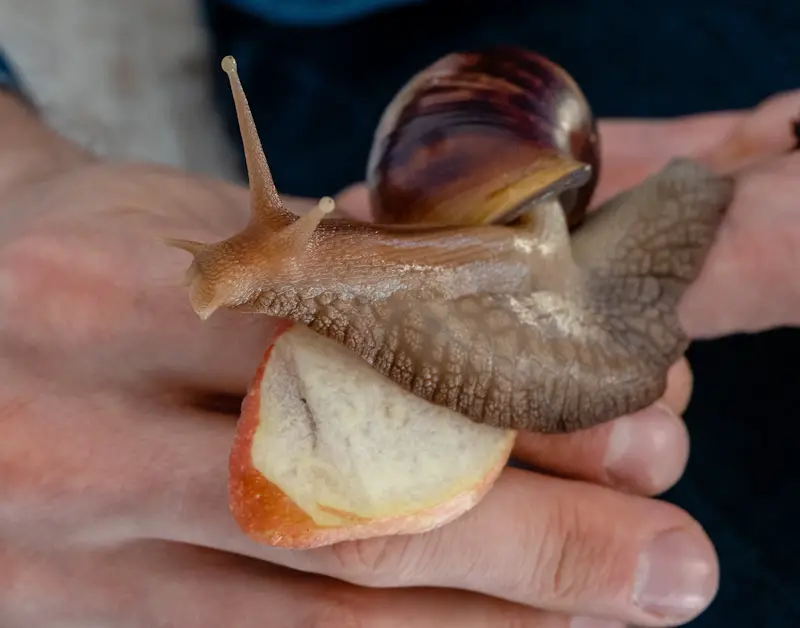
Housing and Care
Choosing the Right Environment for Your Pet Snail
Before bringing home a pet snail, it’s important to choose the right environment for them. Snails are sensitive creatures and thrive in specific conditions. The ideal temperature for most pet snails is between 65-80 degrees Fahrenheit.
They also prefer a humidity level of around 70%. If you live in an area that’s naturally dry, you’ll need to mist their environment regularly to keep up the moisture level.
When choosing a habitat for your pet snail, consider their size and how many you’ll be keeping. Most snails need at least a gallon of space per individual.
You can use an aquarium or plastic container as their habitat. Tupperware containers work great as they’re easy to clean and provide ample space.
Setting Up A Suitable Habitat
After choosing a suitable habitat, it’s time to set it up properly. Start by adding a layer of substrate on the bottom of the container – this can be anything from coconut coir to potting soil.
Make sure it’s deep enough for your snail(s) to burrow in comfortably. Next, add decorations such as small rocks or logs for them to climb on – just make sure everything is thoroughly cleaned before adding it into their habitat.
Add water bowls and food trays suitable for their size. When setting up your pet snail’s habitat, avoid using any chemicals or pesticides that can harm them in any way.
Feeding Your Pet Snail
Most land snails are herbivores and love munching on fruits and vegetables such as grapes, cucumbers, carrots, lettuce leaves amongst others. Cut these items into small pieces so they’re easy for your pets to eat – they don’t have teeth but have tongues with thousands of tiny teeth-like structures called radulas that help them scrape and eat food.
It’s also important to provide a source of calcium for your pet snail – this can be done by adding cuttlefish bone or crushed eggshells to their food bowl. These items are essential as they help keep their shells strong and healthy.
Never feed your pet snail anything that’s processed or high in sugar content. Stick to natural fruits and vegetables only.
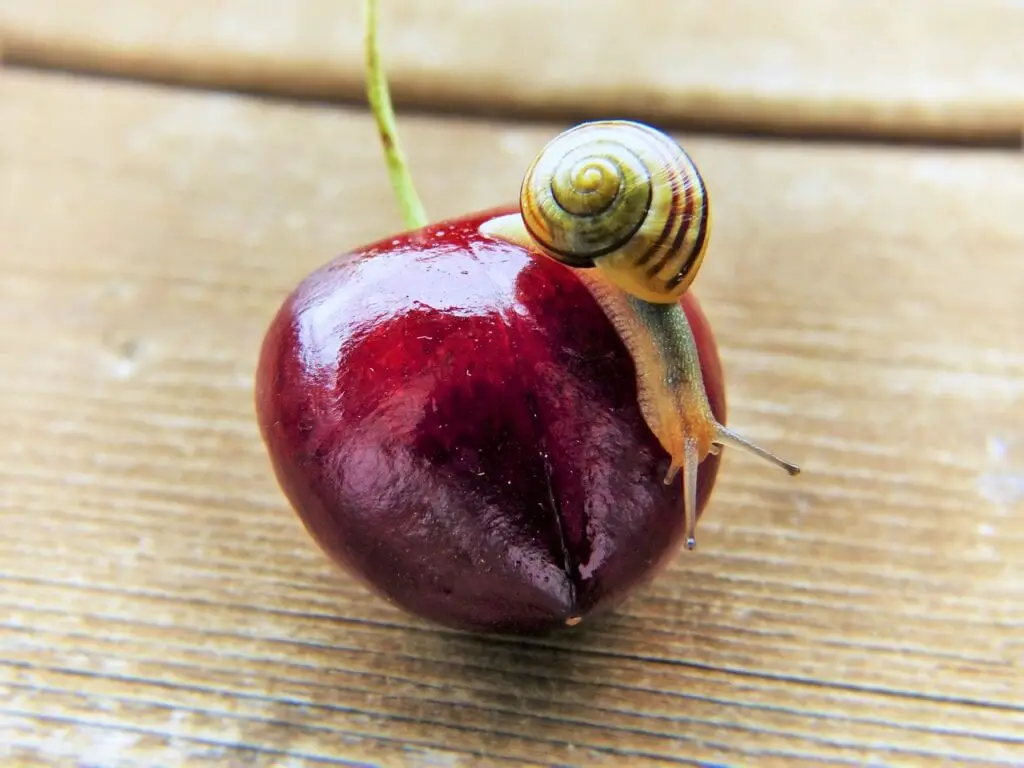
Watering Your Pet Snail
Snails need a constant source of moisture – not just for drinking but also to keep their bodies hydrated. Make sure the water bowl has fresh, clean water at all times.
When watering your pet snail, avoid spraying water directly on them as it can cause stress and even lead to shell rot. Instead, mist the surrounding area so they have access to moisture without being drenched.
Providing a suitable habitat for your pet snail is crucial to their health and well-being. Follow these simple tips on choosing an appropriate environment, setting up their habitat correctly, feeding them a balanced diet, and ensuring they have access to fresh water in order to keep your pet snail happy and healthy!
Health and Maintenance
Common health issues in pet snails
As with any pet, it’s important to be aware of the common health issues that can arise in snails. One of the most common problems is dehydration, which can be caused by a lack of moisture in their habitat or not enough water provided for them to drink. Signs of dehydration include lethargy, sunken eyes, and a dry body.
Another issue that commonly affects pet snails is shell damage. This can occur if the snail falls from a height or is accidentally stepped on.
In some cases, the shell may crack or even break off entirely. If your snail is experiencing shell damage, it’s important to take them to a veterinarian who specializes in exotic pets for treatment.
Snails are also susceptible to bacterial infections which can cause symptoms such as loss of appetite and sluggishness. These infections can be treated with antibiotics but should be diagnosed by a vet first.
Preventative measures to keep your pet healthy
To prevent common health issues in pet snails, there are several measures you can take as their owner. First and foremost, ensure that their habitat has adequate moisture levels by misting it regularly or providing a shallow dish of water for drinking. It’s also important to avoid handling your snail too much and providing them with appropriate hiding places within their habitat.
Snails like to burrow and hide during the day so make sure they have places to do so. Additionally, regularly clean their habitat by removing uneaten food and waste materials promptly as these can attract harmful bacteria that could make your pet sick.
Cleaning and maintaining their habitat
Cleaning your pet snail’s habitat is an essential part of keeping them healthy. One thing you’ll want to do often is remove any uneaten food or waste materials from the habitat. This will help keep their home clean and prevent the growth of harmful bacteria.
You’ll also want to replace the substrate in your snail’s habitat every few weeks, or more frequently if it becomes soiled or damp. Depending on the type of snail you have, they may prefer different types of substrates such as coconut fiber or peat moss.
In addition to cleaning their habitat, you’ll want to maintain appropriate temperature and humidity levels for your pet snail. Different species have different requirements but most snails do best in warm temperatures between 70°-85°F and a relative humidity level of around 80%.
Overall, keeping a pet snail healthy requires attention to detail and regular maintenance. By taking preventative measures and staying on top of cleaning their habitat, you can help ensure that your pet lives a long and happy life.
Fun Facts About Snails
Their shell is a part of their body…
Did you know that a snail’s shell is actually a part of its body? It’s true!
The shell is made up of calcium carbonate, and snails grow it themselves. As they grow, their shell grows with them.
The spiral shape of the shell helps to protect the snail from predators. If a predator tries to attack the snail, it can simply retreat into its shell for protection.
They’re surprisingly strong…
Despite their slow speed, snails are actually quite strong. They can carry up to ten times their own body weight on their backs! This comes in handy when they need to move heavy objects out of their way or climb over obstacles.
They have an incredible sense of smell…
Snails are known for having a highly developed sense of smell. In fact, they use their sense of smell to navigate and find food. Their tentacles are sensitive to chemical changes in the environment, allowing them to detect food from far away.
They’re hermaphrodites…
That’s right – snails are hermaphrodites, which means that they have both male and female reproductive organs. When two snails mate, they both fertilize each other’s eggs and lay clutches of eggs that can hatch into dozens or even hundreds of baby snails!
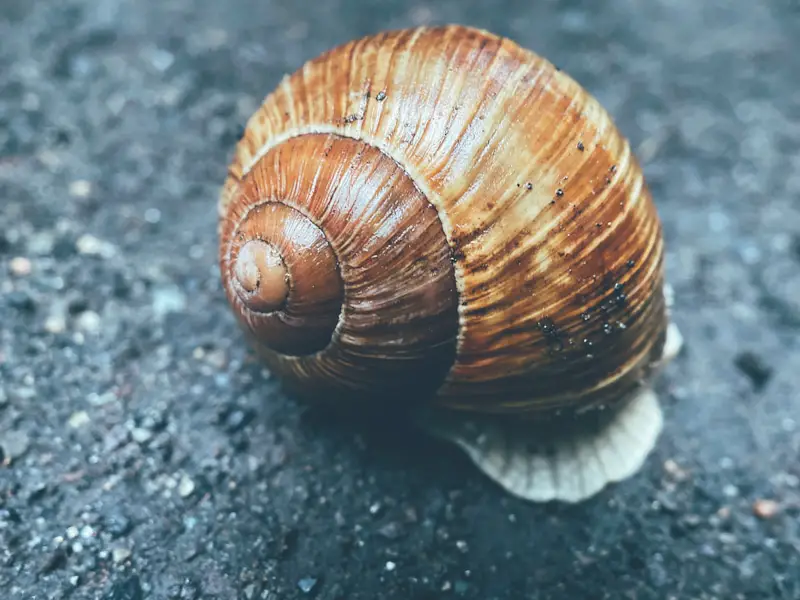
Interesting Benefits to Having a Pet Snail
They’re low-maintenance pets…
If you’re looking for an easy-to-care-for pet, look no further than a pet snail! They don’t require much space or attention, making them perfect for busy people or those who live in small apartments.
They can help reduce stress levels…
Studies have shown that watching snails crawl can have a calming effect on people. There’s something about their slow, deliberate movements that can help us relax and unwind. If you’re feeling stressed, try spending some time with your pet snail and see if it helps!
They’re great for kids…
Snails are a wonderful pet for children because they teach responsibility and empathy. Kids can learn how to care for another living creature and develop a sense of compassion by watching their pet grow and thrive.
They make fascinating study subjects…
If you’re a science enthusiast or just curious about the natural world, keeping a pet snail can be a fascinating experience. You’ll get to observe their behavior, learn about their biology, and gain insight into the intricacies of the natural world.
They’re eco-friendly…
Snails are gentle creatures that don’t require much space or resources to thrive. They don’t make noise or produce waste like other pets do, making them an eco-friendly choice for those who want to reduce their carbon footprint.
Keeping a pet snail is not only fun but also has its benefits! With these fun facts about snails and surprising benefits of having them as pets in mind, you might be considering getting one yourself!
Conclusion
Recap of Benefits of Having a Pet Snail
Snails make unique and low-maintenance pets that can bring joy and fascination into your daily life. These creatures are fascinating to observe as they move around their habitat, eat, and even mate. Additionally, snails are relatively inexpensive to keep and require very little attention compared to other pets, making them an ideal choice for busy individuals or those with limited space.
One of the biggest benefits of having a pet snail is the calming effect they can have on their owners. Watching these slow-moving creatures go about their business can be very therapeutic and may help reduce stress levels.
Furthermore, because snails are not particularly active pets, they don’t require much space or special equipment in order to thrive. Another benefit of owning a pet snail is that they help teach children responsibility and empathy towards animals.
Children can learn how to care for another living being by feeding and providing for their pet snail’s needs. They also learn about the importance of providing a clean and comfortable environment for their pet.
Final Thoughts on Keeping a Happy, Healthy, and Interesting Pet
If you decide to get a pet snail, it’s important to remember that these creatures have specific needs in order to stay healthy. Be sure to provide them with suitable food (such as fresh fruits or vegetables) and plenty of water.
Also make sure that their habitat is kept clean; remove any uneaten food or fecal matter regularly. It’s also important not to handle your pet snail too often; while some species are more tolerant than others, most do not like being disturbed too frequently.
If you do need to move your snail for any reason (such as cleaning its habitat), be gentle and use only damp hands. Remember that owning a pet is a long-term commitment.
Snails can live for several years with proper care, so be sure you’re ready to provide for your pet long-term before bringing one home. With the right care and attention, however, a pet snail can be a wonderful addition to any household!

